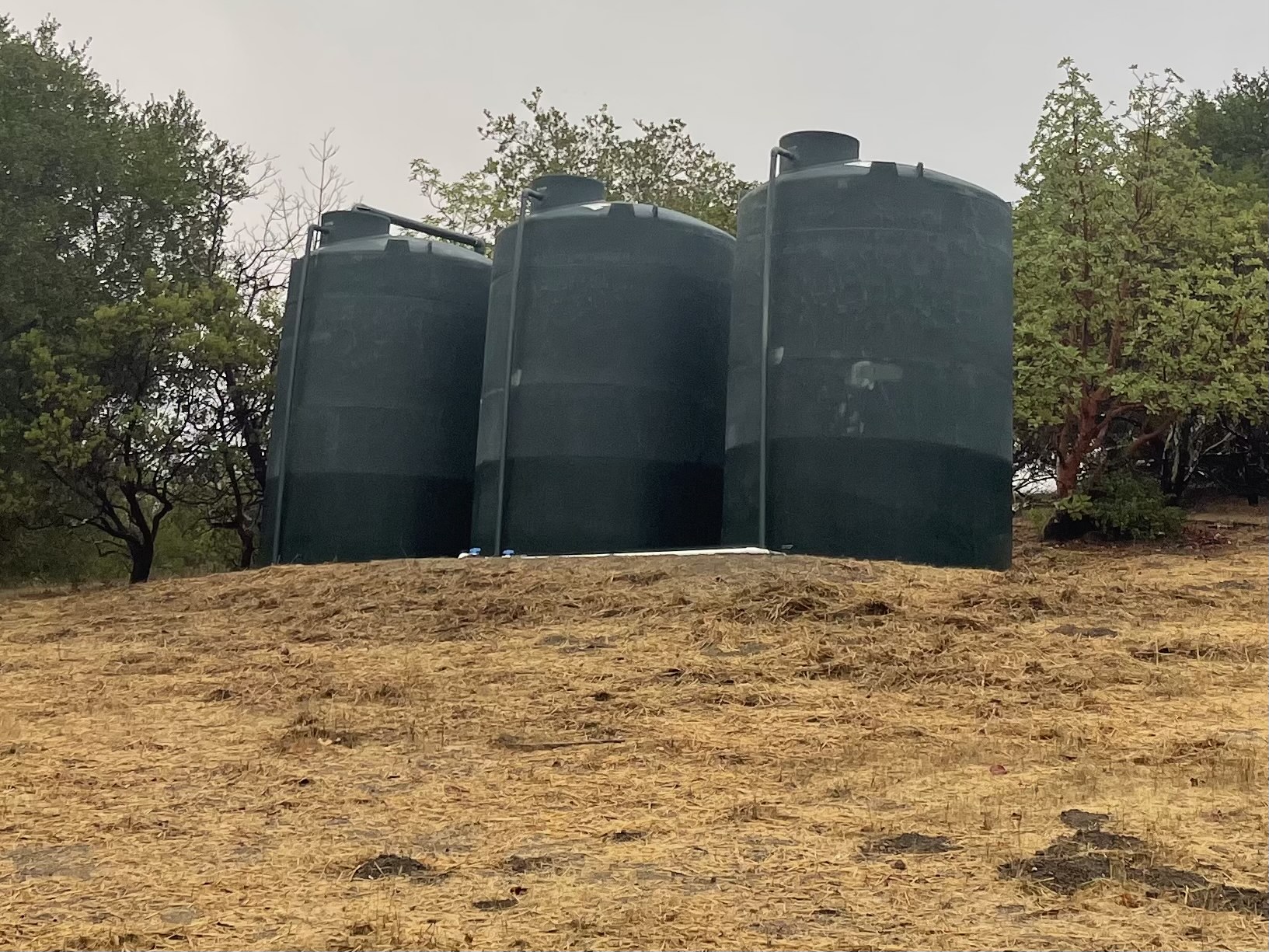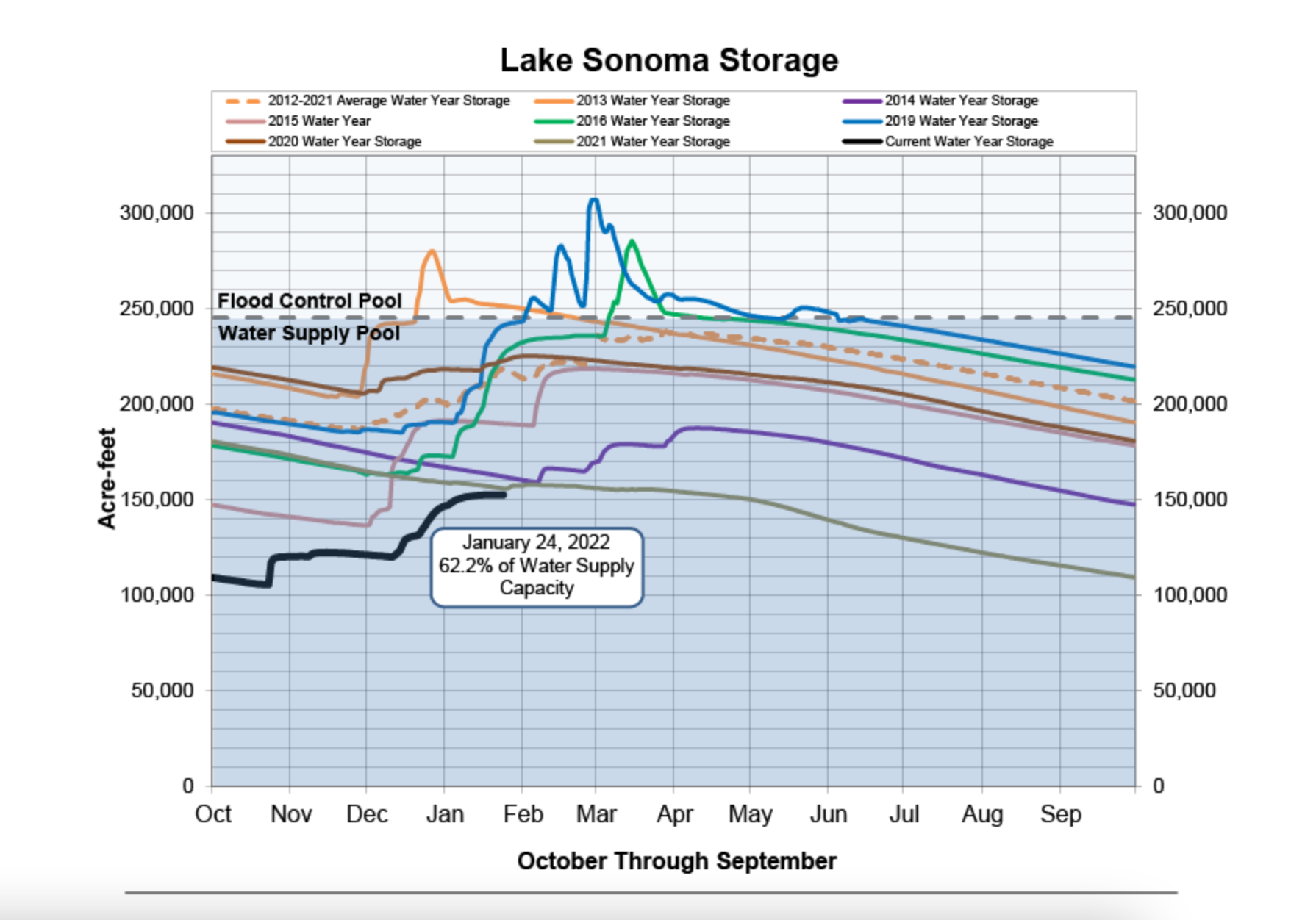
How can we harness the bounty of the wet season all year long?
In the middle of California’s rainy season, it’s easy to think that water is abundant. Just a month ago, storms were passing through regularly, creeks were rushing, grassy hills were vibrant green, and water was everywhere. But recent reporting shows California isn’t out of the woods, for reservoir levels or groundwater recharge, and without several more soaking storms over the rest of the rainy season, it’s unlikely we will emerge from drought this year.
January brought lower than average rainfall and there’s no way to be sure of what’s in store in the coming months. After watching creek beds dry out and reservoir levels dip to dangerously low levels last year, imagining another season short on water can bring anxiety. It’s worth considering what we can do now, asking the question – How can we harness the bounty of the wet season all year long?



There are many ways, large and small, to help rainwater find its way into the ground to recharge aquifers, or to store it above ground for future needs. Capturing rainwater is a practice that humans have employed for centuries. These techniques are important to learn more about in a region like ours, with its Mediterranean climate and “feast to famine” water season.
With the growing concern that climate change will bring a longer dry season here, implementing a rainwater catchment system into your home and garden offers one tangible solution to dry season shortages, while also supporting the local environment. Sonoma Ecology Center’s Senior Scientist Steven Lee has built a 70,000 gallon rainwater catchment and storage system that supports his livestock, garden, orchard, and landscaping, allowing him to know that his plants and animals are cared for, despite the potential for longer dry summers ahead. When restrictions go in place for watering plants during times of peak drought, or when wells start to go anemic, those with stored rainwater can pull on their own reserves.

Current water levels at Lake Sonoma have Sonoma County water storage at approximately where it was this time last year, setting us up for similar conditions as experienced last year, particularly if no more winter storms arrive.
Using rain harvesting tanks is an excellent partial solution to navigating our dry season. A typical rainwater capture system can support a garden for weeks to months, depending on size and catchment area. With five to seven months of little to no rain, though, most systems won’t fully solve dry season water needs. They are part of an array of solutions that build resilience. Also, putting water tanks on your property isn’t always possible, but there are other options for storing and managing rainwater. An option to expand the availability of scarce water is to reuse it onsite as graywater, though this solution also requires care and planning.
If you have an interest in thoughtfully managing rainwater, you can see several methods in action at Sonoma Garden Park, where Sonoma Ecology Center has implemented variety of techniques to “slow it, spread it, sink it” – a term coined by permaculture designers referencing the importance of catching rainwater, holding it on-site, and getting it into the ground. When rainwater is prevented from running off, there is a decrease in erosion and more water replenishing aquifers – both important positive ecological results.
Take a walk around Sonoma Garden Park’s beautiful gardens and explore our Low-Impact Design (LID) tour to learn about LID landscaping – a method of design that centers sinking rainwater back into the earth to recharge aquifers or storing it in other ways for later use. At Sonoma Garden Park you can view a variety of applications that support our local environment and our human day-to-day water needs. From gray water systems and roof water catchments, to swales and drought-tolerant native plantings, there are options for all styles and budgets to get started harnessing the bounty of California’s rainy season.
Get started with some rain harvesting examples from Sonoma Garden Park:




